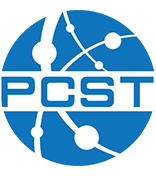Insights from a brand new cooperation model – Science edu-communication through frame analysis of the project – Difference Science News in Taiwan
Author: Leon Yufeng Wu – Chung Yuan Christian University, Taiwan
Co-authors:
Chun-Yen Chang – National Taiwan Normal University
Pin-Sheng Li – National Taiwan Normal University
Science Edu-Communication is a model implementing new production and research avenues in modern science communication. Scholars have identified that the fields of science education and science communication share the same goal of promoting public understanding of science. The project Different Science News (DSN) is a milestone achievement and practice of science edu-communication in Taiwan, because science educators are actively involved as facilitators between both journalists and scientists during the production of the science news. The DSN series has produced more than 200 science news segments and reached more than 60 million viewers since 2014. Although the series has demonstrated successful outreach during the past 3-year cooperation period, we have encountered various conflicts in production due to different frames and perspectives of what the science news should be. Through interviewing and frame analysis, we examined the conflicts that resulted from divergent frames. The result showed that journalists hold wider frames toward science news. They demonstrated frames of awareness (A) and enjoyment (E) (i.e., in order to catch audiences’attention), and reinforced understanding (U) and interest (I). Scientists and science educators also held on understanding (U), but the accuracy and correctness of the information were their concerns (e.g., detailed information in the charts, precise facts demonstrated in the animation, and presented scenes. The conflicts concerning awareness (A), enjoyment (E), understanding (U) and scene between science educators and journalists occurred in the earlier stage of production. The conflicts concerning understanding (U) and scene between scientists and journalists occurred in the later stage of production. Different frames did cause conflicts. The findings also showed that journalists’ frames did not follow deficit model, scientists and science educators did, however. Strategies for better mitigation will be discussed.
The author has not yet submitted a copy of the full paper.
Presentation type: Individual paper
Theme: Science
Area of interest: Building a theoretical basis for science communication
